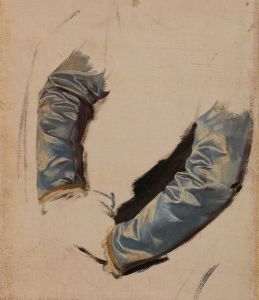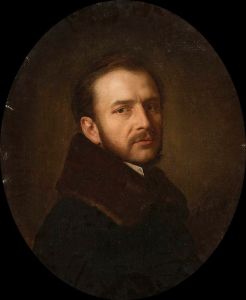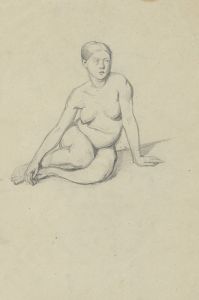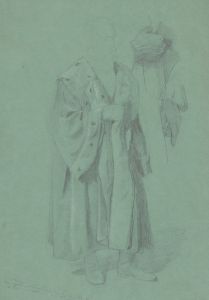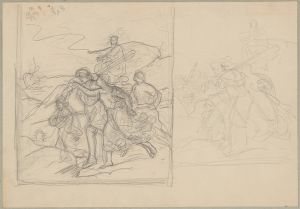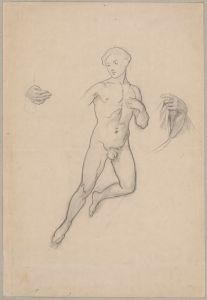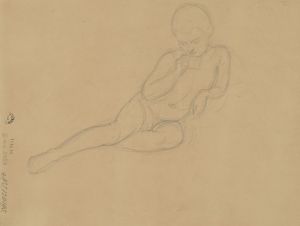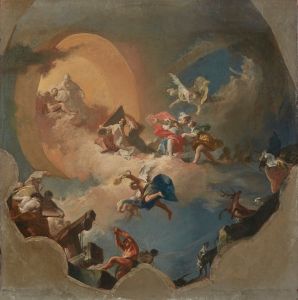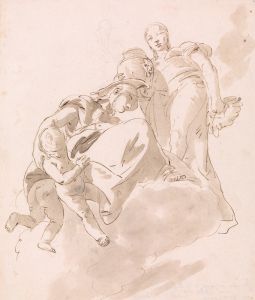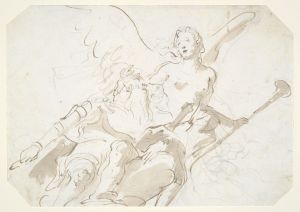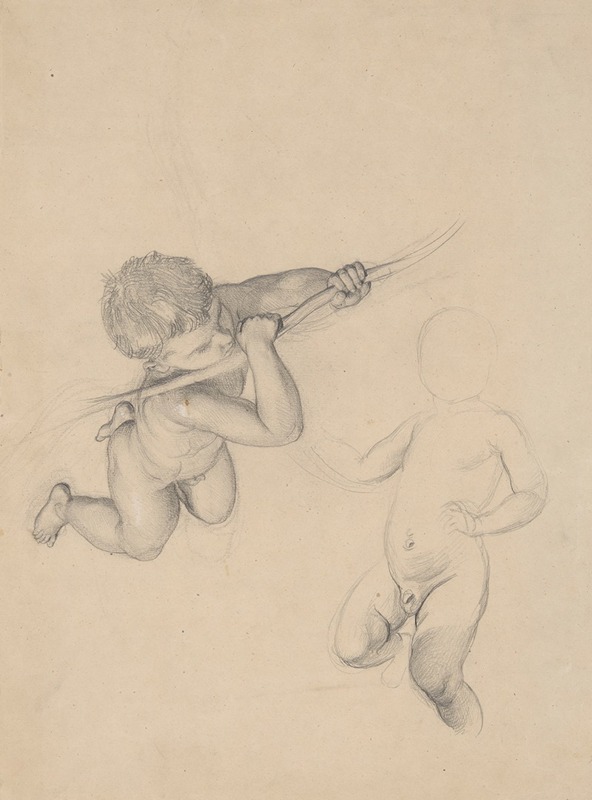
Studia puttów do plafonu ‘Pochód weselny Amora i Psyche’
A hand-painted replica of Józef Simmler’s masterpiece Studia puttów do plafonu ‘Pochód weselny Amora i Psyche’, meticulously crafted by professional artists to capture the true essence of the original. Each piece is created with museum-quality canvas and rare mineral pigments, carefully painted by experienced artists with delicate brushstrokes and rich, layered colors to perfectly recreate the texture of the original artwork. Unlike machine-printed reproductions, this hand-painted version brings the painting to life, infused with the artist’s emotions and skill in every stroke. Whether for personal collection or home decoration, it instantly elevates the artistic atmosphere of any space.
Józef Simmler (1823-1868) was a notable Polish painter of the 19th century, renowned for his historical and genre scenes. One of his works, "Studia puttów do plafonu ‘Pochód weselny Amora i Psyche’" (Studies of Putti for the Ceiling ‘Wedding Procession of Cupid and Psyche’), is an example of his skill in depicting mythological themes and his attention to detail.
Simmler was born in Warsaw and studied art in various European cities, including Dresden, Munich, and Paris. His education and exposure to different artistic styles and techniques significantly influenced his work. Simmler became a prominent figure in the Polish art scene, contributing to the development of Polish painting during the period of partitions when Poland was divided among Russia, Prussia, and Austria.
The painting "Studia puttów do plafonu ‘Pochód weselny Amora i Psyche’" is a preparatory study for a larger ceiling fresco. The subject matter is derived from the classical myth of Cupid and Psyche, a popular theme in European art. The myth tells the story of the love between Cupid, the god of love, and Psyche, a mortal woman who undergoes various trials to be united with Cupid. Their wedding procession is a moment of celebration and divine approval, often depicted with a sense of grandeur and festivity.
In this study, Simmler focuses on the putti, or cherubic figures, which are a common motif in Baroque and Rococo art. These putti are typically depicted as chubby, winged infants and are often associated with themes of love and innocence. Simmler’s attention to the putti in this study demonstrates his meticulous approach to composition and his ability to capture the playful and joyous nature of these figures.
The use of putti in the context of the wedding procession of Cupid and Psyche adds a layer of symbolism, emphasizing the purity and divine blessing of the union. Simmler’s study likely served as a detailed preparatory work to ensure the accuracy and harmony of the final ceiling fresco. His ability to render the delicate forms and expressions of the putti showcases his technical proficiency and his understanding of classical themes.
While the final ceiling fresco may no longer be extant or widely known, the study itself remains a testament to Simmler’s artistic process and his contribution to Polish art. His works, including this study, reflect the broader European artistic trends of the 19th century while also embodying a distinct Polish character.
Józef Simmler’s legacy as an artist is marked by his dedication to historical and mythological subjects, his skillful technique, and his influence on the Polish art community. "Studia puttów do plafonu ‘Pochód weselny Amora i Psyche’" is a fine example of his work, illustrating his ability to blend classical themes with his own artistic vision.





